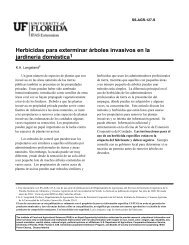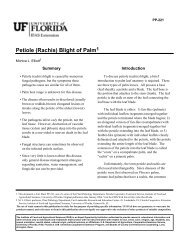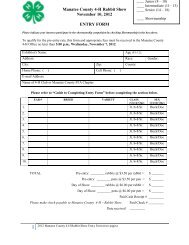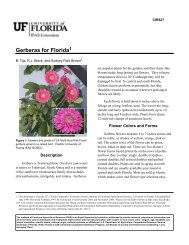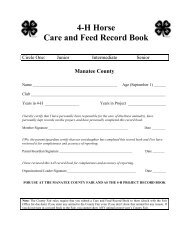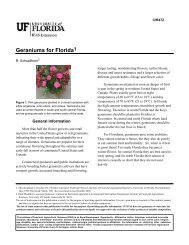Plant Selection & Landscape Design - Southwest Florida Water ...
Plant Selection & Landscape Design - Southwest Florida Water ...
Plant Selection & Landscape Design - Southwest Florida Water ...
You also want an ePaper? Increase the reach of your titles
YUMPU automatically turns print PDFs into web optimized ePapers that Google loves.
<strong>Landscape</strong> Planning Worksheet<br />
This worksheet can be used for both new and established landscapes. By following these steps, you will be on your way to a<br />
thriving, low-maintenance landscape suited to your climate and needs.<br />
1. Decide why you want to landscape.<br />
Most homeowners think of landscaping as a way to add beauty to their home or to improve their property’s resale value. Other<br />
reasons to landscape are more specific, such as enhancing or screening a view, creating a microclimate, or attracting wildlife. You<br />
may need a play area for your children, or perhaps you would like to entertain family and friends outdoors. Your passion may be<br />
raising vegetables or simply savoring a lovely view.<br />
Before you begin, think about how you will use your landscape. Write down as many ideas as possible. It is much easier to<br />
remove elements from your plan than it is to add them down the line.<br />
__________________________________________________________________________________________________________<br />
__________________________________________________________________________________________________________<br />
__________________________________________________________________________________________________________<br />
2. Obtain a soil analysis.<br />
Soil plays a big part in any landscape project, influencing what plants will thrive in your yard. Determine your soil’s texture<br />
(sandy to clay), and have it tested to determine the pH—the level of acidity or alkalinity. This information will help you decide<br />
which plants are best suited to the conditions of your yard.<br />
Soil texture: ___________________________________<br />
pH: __________________________________________<br />
Any exceptions? (For example, the place where you want to put a planting bed may have more acidic soil than other areas in the<br />
landscape.)<br />
__________________________________________________________________________________________________________<br />
3. Draw a site plan.<br />
You can use a pencil, ruler and graph paper, or computer software to draw your site plan. Do not worry about getting the scale<br />
just right. If you have a survey of your property, you can copy it and draw on the copies.<br />
Draw your house and existing trees, shrubs, and other plants you want to keep. If you already have an irrigation system, be sure<br />
to note its location and various zones. Include permanent features such as utilities, hardscapes like the driveway, and water<br />
sources like spigots. See the sample site plan provided for guidance.<br />
A <strong>Florida</strong>-Friendly Landscaping TM Publication<br />
25




